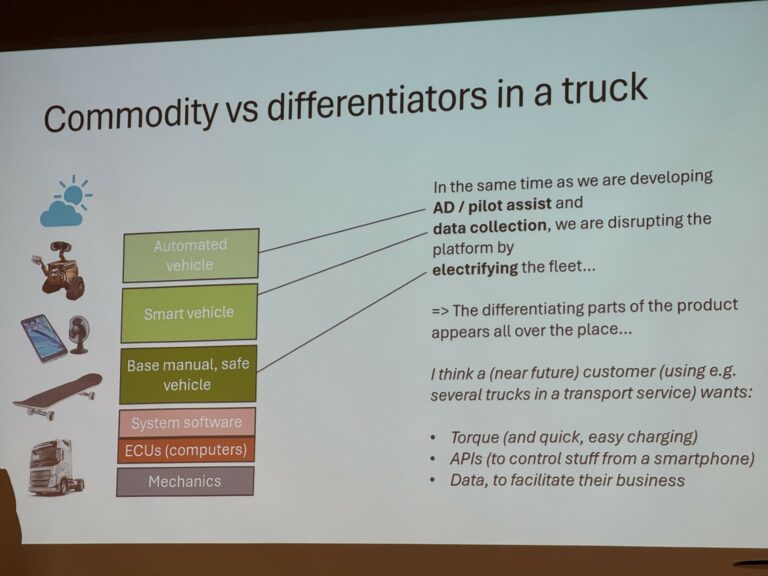
Image is taken from the presentation of Jonn Lantz, AB Volvo.
Today, we had the Software Center reporting workshop, where we talked about software development and how it will look like in the future. The picture above shows how important the software is in the current truck.
In his keynote, our colleague showed how to design software in the large scale, when the commodity is important, but innovation is what shines out; in the world, where the platforms are important, but do not get the attention that they need.
This kind of approach means that you must be able to grasp both. One must design the software to meet all kinds of features that are relvant today and may be relevant tomorrow. When I see this, I think about ChatGPT, where the platform is the ChatGPT model that allows us to create own GPT-s based on that platform.
This also reminds me about platforms like Ollama or Torch, which allow us to build products fasts and customized to our needs. We can grab models, share them, train them, and (for a small fee) we can even deploy models based on this platform.
